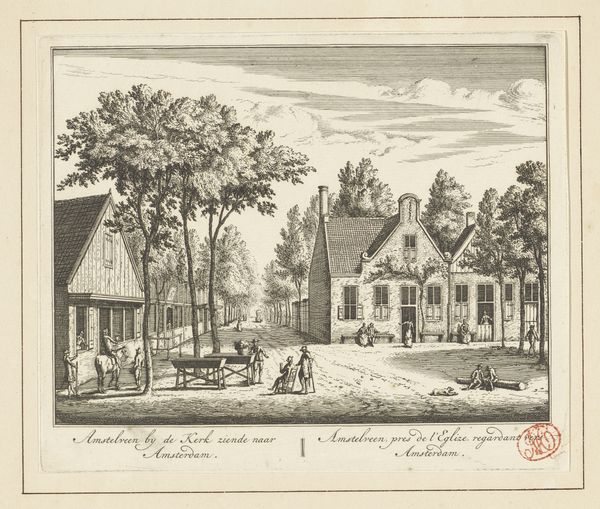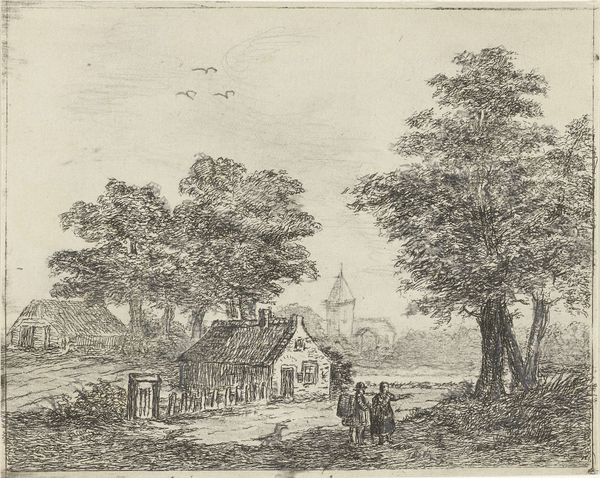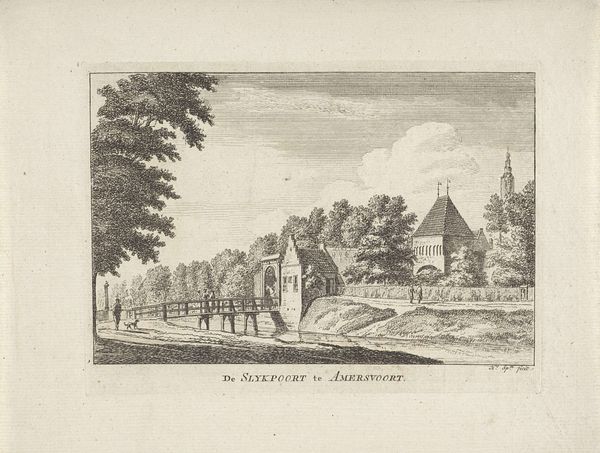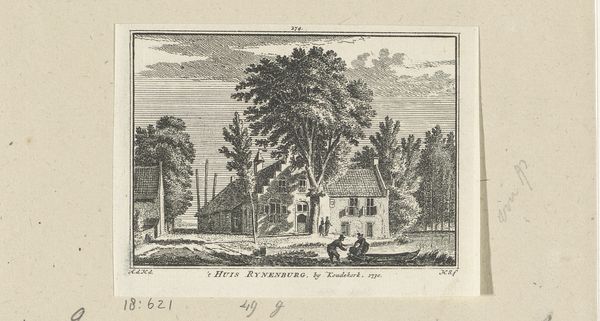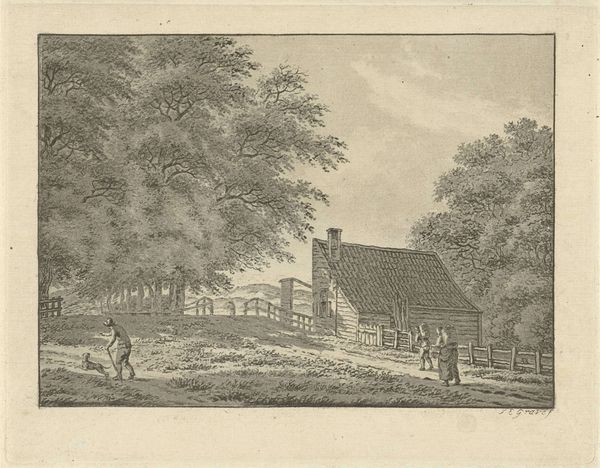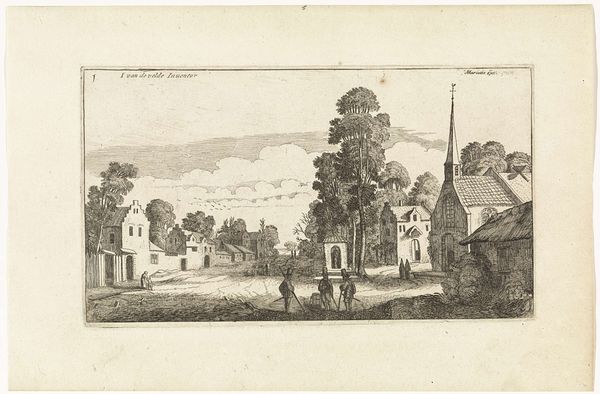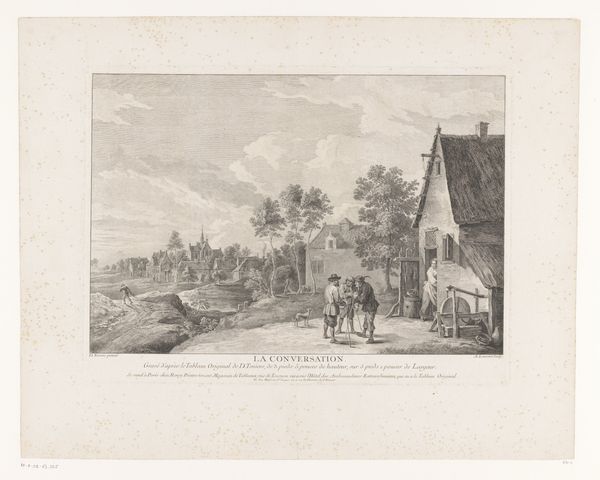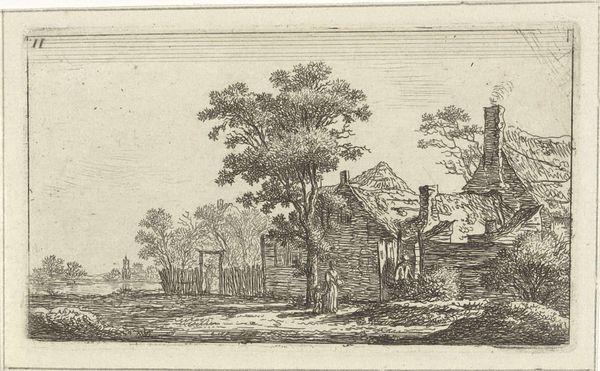
print, engraving
#
neoclacissism
#
dutch-golden-age
# print
#
landscape
#
cityscape
#
engraving
Dimensions: height 161 mm, width 196 mm
Copyright: Rijks Museum: Open Domain
Curator: Let’s discuss this striking engraving by Hermanus Petrus Schouten, known as "Gezicht in Amstelveen," created between 1795 and 1805. It is currently held in the Rijksmuseum collection. What are your initial thoughts? Editor: It's a very serene scene. The delicate linework captures this almost sleepy atmosphere in what seems like a Dutch village square. The light and shadows give it a pleasant, dreamlike quality. What socio-political conditions defined life in Amstelveen when this piece was created? Curator: During that period, the Batavian Republic was established amid revolution and political restructuring, and the artwork provides us insight into the social life. Despite all that political change, you see everyday people – conversing, sitting, generally going about their business in the town square. Schouten portrays daily life as usual in an idyllic way. Editor: Yet that ‘normality’ would certainly not have been shared across the Republic. Depictions such as these help illuminate the limited gaze of many canonical histories. Were women also able to live so serenely at that time? How about Jewish, or Black, members of the community? Do we know the political views of Hermanus Petrus Schouten? Curator: Those are critical points to consider. Although direct documentation may be scant, Neoclassicism often idealized particular social orders and behaviors. Also, by selecting this subject matter, he reinforces particular concepts of nationhood and community that, in many instances, excluded other minority social realities. Editor: Exactly. Considering it’s an engraving, a medium accessible to a broader public, these seemingly gentle depictions carried significant weight. What story were authorities hoping it told to those in Amstelveen and elsewhere? Whose values were being promoted? It invites an intersectional exploration, layering class, gender, and race. Curator: It indeed illustrates the complexity of visual sources. It asks us to consider whose perspectives are prioritized. Seeing its home in the Rijksmuseum today makes us reflect on what aspects of the past we celebrate, and what aspects we marginalize. Editor: Thinking through such considerations should remind us that seemingly bucolic depictions are also infused with power dynamics. It calls for vigilant reassessment about whose voices we choose to amplify today through our own narratives about the past.
Comments
No comments
Be the first to comment and join the conversation on the ultimate creative platform.
